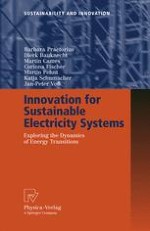Innovation is key to achieving a sustainable electricity system. New technologies and organizational changes can bring about more sustainable, climate-friendly electricity structures. Yet the dynamics of innovation are complex, and difficult to shape. This book, written by experts in the field, sets out to explore the dynamics, the drivers and the setting of innovation processes. Case studies on micro cogeneration, carbon capture and storage, consumer feedback, network regulation and emissions trading provide insights into innovation dynamics in the electricity system and are analyzed to derive strategic implications for innovation policies. A special focus is placed on drivers and barriers of change, and their consequences for shaping the innovation process. This book is an indispensable source of information for researchers and decision makers in energy and climate change as well as for lecturers and students interested in the principles and ramifications of electricity innovation dynamics.
